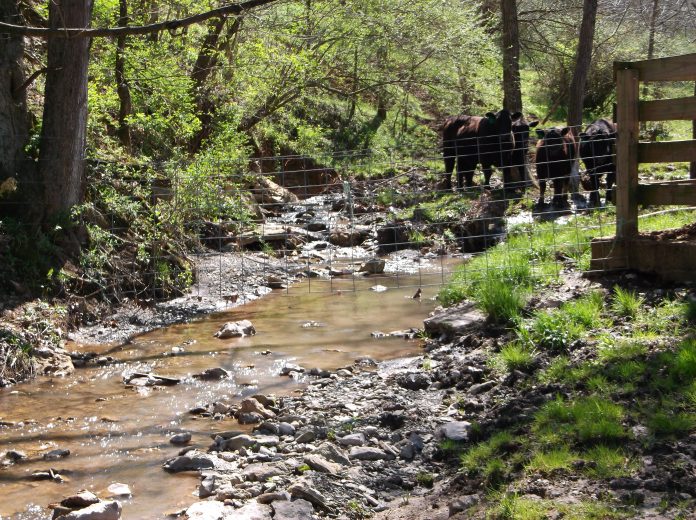Soil loss is something that we should all strive to prevent on our farms. Why? Because a soil loss of only 1/32 of an inch over an acre represents approximately a 5-ton loss.
It doesn’t take long before our best topsoil is compromised and our ability to produce top-yielding crops is hampered.
Looking back
The Dust Bowl of the 1930s was a result of years of drought and poor farming practices in the form of over-tilled and over-grazed lands. By 1935, all or most of the topsoil from 100 million acres had been lost and an estimated 850 million tons of soil had blown away.
Hugh Hammond Bennett, a soil surveyor for the USDA, said that if we are bold in our thinking, courageous in our accepting new ideas, and willing to work with instead of against our land, we shall find in conservation farming an avenue to the greatest food production the world has ever seen.
Quite a statement for someone to make in the middle of one of the worst disasters in history.
Bennett would go on to be known as the father of soil conservation. Through his efforts, the USDA’s Soil Conservation Service (today’s Natural Resources Conservation Service) and soil and water conservation districts would be born.
Present and future
The Natural Resources Conservation Service and Soil and Water Conservation Districts have in the past, in the present and, hopefully, in the future worked together with farmers in their respective areas to reduce the amount of soil and nutrients leaving their farms.
Advancements in technology, conservation planning, along with best management practices such as no-till, contour strips and cover crops, will slow erosion on cropland.
Rotational grazing, stream exclusion fencing, and heavy use pads will reduce erosion and improve water quality on pasture land.
There are many tools in the toolbox of today’s conservation-minded farmers. Equipment, information, and technical assistance are all easily accessible.
As an SWCD employee, I see the effects of soil erosion on a daily basis. As a producer, I do my best to keep erosion to a minimum on our farm.
Our ability to produce such an abundance of food starts with our soils. Franklin D. Roosevelt said that the nation that destroys its soil, destroys itself. There is a lot of truth to that statement.
In parts of the world where erosion has gone unchecked, topsoil has washed and or blown away. With it went the nation’s strength and security. A nation that is unable to feed its citizens is at the mercy of another.
Our history was, and is, a vision for the future, built on the foundation of good stewardship in the present. Let us be good stewards of our soils.














I am interested in pasture management. I have too many stones just below the surface for no-til . What is
contour strips?
I have 5 acres of pasture divided into 7 paddocks for rotational grazing. I keep about seven horses which
eat it very close.
I am interest in ways to hold the top soil.
G’day Don,7 horses on 7 acres would be beyond the landscapes capability I would suspect.What is your cycle (5/7 days)? If you intend to keep them all I suggest you yard feed them except for a couple of hours each day.The reality is that at any one time one paddock should be allowed to run a full spring/summer/fall without any grazing to establish a viable seed bank with the pasture can call on until its next schedule “rest phase”.
Frank Egan. Downunder.
Hi Don,
Just want to start off by saying thank you for your interest and I appreciate you taking the time to send us a message. No-till or conventional till can both be a challenge, when seeding pastures on stony soils. Sometimes a soil sample is the better tool when compared to a seeder or no-till drill. Something as simple as adjusting our soil pH with an application of lime can, “awaken” a dormant seed bank that is waiting for the proper nutrients to become available. Contour strips are used in cropping systems that are in areas with steep slopes. Crops in this system would typically be, corn, soybeans, small grains, and hay in alternating strips. I would recommend keeping your horses off of your pasture and feeding hay, for a while. This will allow your pasture to recover. This rest period, will increase forage production and quality. Taller grasses will have a larger root mass and in turn will have increased soil & water holding capacities. If you can foster an environment in which your pasture can thrive it will pay big dividends in soil retention and forage production. NRCS has produced a booklet titled “Pastures for Profit”, a guide to rotational grazing. This is an excellent resource for anyone interested in learning more about “grazing” livestock. Your local USDA Service Center and Soil and Water Offices are also available to offer technical advice and/or grazing management plans free of charge.